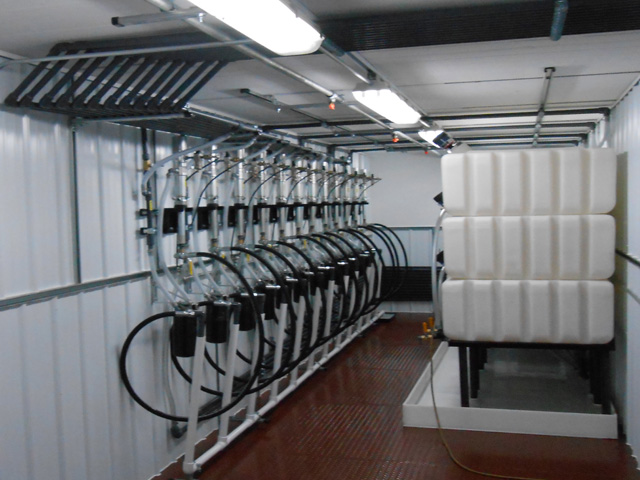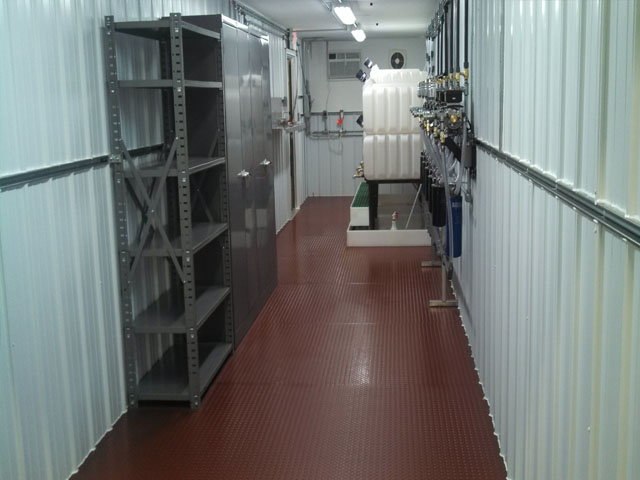Key Components of Effective Lubrication Oil Storage
Written By: Terry Harris, CMRP
Many plant operations do not understand the importance of where and how their lubricants are stored. All lubricants need to be stored in ambient controlled conditions. Keeping the lube at a controlled temperature, and not suffering the temperature swings of the ambient conditions can allow most petroleum based lubes to last for 20 years. But in plants where the lube oils are stored in the plant or outside in storage areas, the ambient extremes can allow moisture, foreign material and other contaminants to enter the storage containers and lube equipment. This greatly shortens the lube oil life and lubrication effectiveness. This leads to drastically shortened equipment life.
After lubrication audits many plants struggle to find an adequate area to store their lube oils. Locating an area that is isolated and can be air conditioned, heated, and sealed from contamination can be extremely difficult in the tight constraints of existing facilities.
It is important for plant personnel to understand the importance of proper design and the requirements for storing lubricating oils.
Below are some failure modes that can affect the life of the lubricant and more importantly the life of the components in your rotating equipment.
For more information on Lube Oil Storage Failure Modes:
https://www.reliableprocesssolutions.com/lube-storage-failure-modes/
Key Components of Oil Storage & Design:
- Clean Foreign Material Free Area
- Moisture Free Area
- Ambient Control (Heat – A/C – De-Humidifier)
- Spill Control and Containment
- Fire Safety
- Consolidation of Lube Oils
- Filtration and Recirculating Equipment
- Lube Application Equipment Storage
In designing your lubrication storage area consider these components in the design.
- The room should be designed as far away from foreign material as possible, so as to keep it away from the lubes and lube application equipment.
- Facilities that have moisture in the operations or may be in a geographical location where it rains often should consider that high humidity may exist, and make its way into the lube oils.
- Areas of the world that may be a hot climate or a cold climate. Either of these conditions can create issues with the lube oil viscosity, and help induce moisture into the lube storage containers
- Environmentally the lubes should not be stored where a leak or a spill can contaminate the ground from water run-off. Many lubrication storage solutions have been designed, built, and justified for environmental reasons alone.
- Lube oils are very safe to store due to their very high flash points (Class IIIB Fluids). But they still need to be stored away from potential heat or fire sources. Many materials are available for storing lubricants. Poly Lube Storage – Plastic, Steel, Aluminum, as well as Stainless Steel are some of the most popular materials. The material may be based on the ambient atmosphere in the area. Heat, moisture, etc. will drive the choice.
- The storage area can also be used to consolidate lubricants to minimum product choices and requirements. Lube oil storage rooms should be minimally sized for the lubes required. The room can also contain filtration components to keep the lube oils particle and moisture free. The room also provides an area to store all lube application equipment. Grease guns, oil transfer containers, funnels, replacement oil filters, should all be stored in clean areas.
Learning the important details of effective lubrication oil storage and how to control the costs to implement your lube room can be a huge benefit to any company seeking world class maintenance practices.
Some Additional Links for Lubrication Storage Solutions:
Lubrication Storage Rooms | Self-Contained Lubrication Storage | Oil Transfer Equipment
 |
 |

